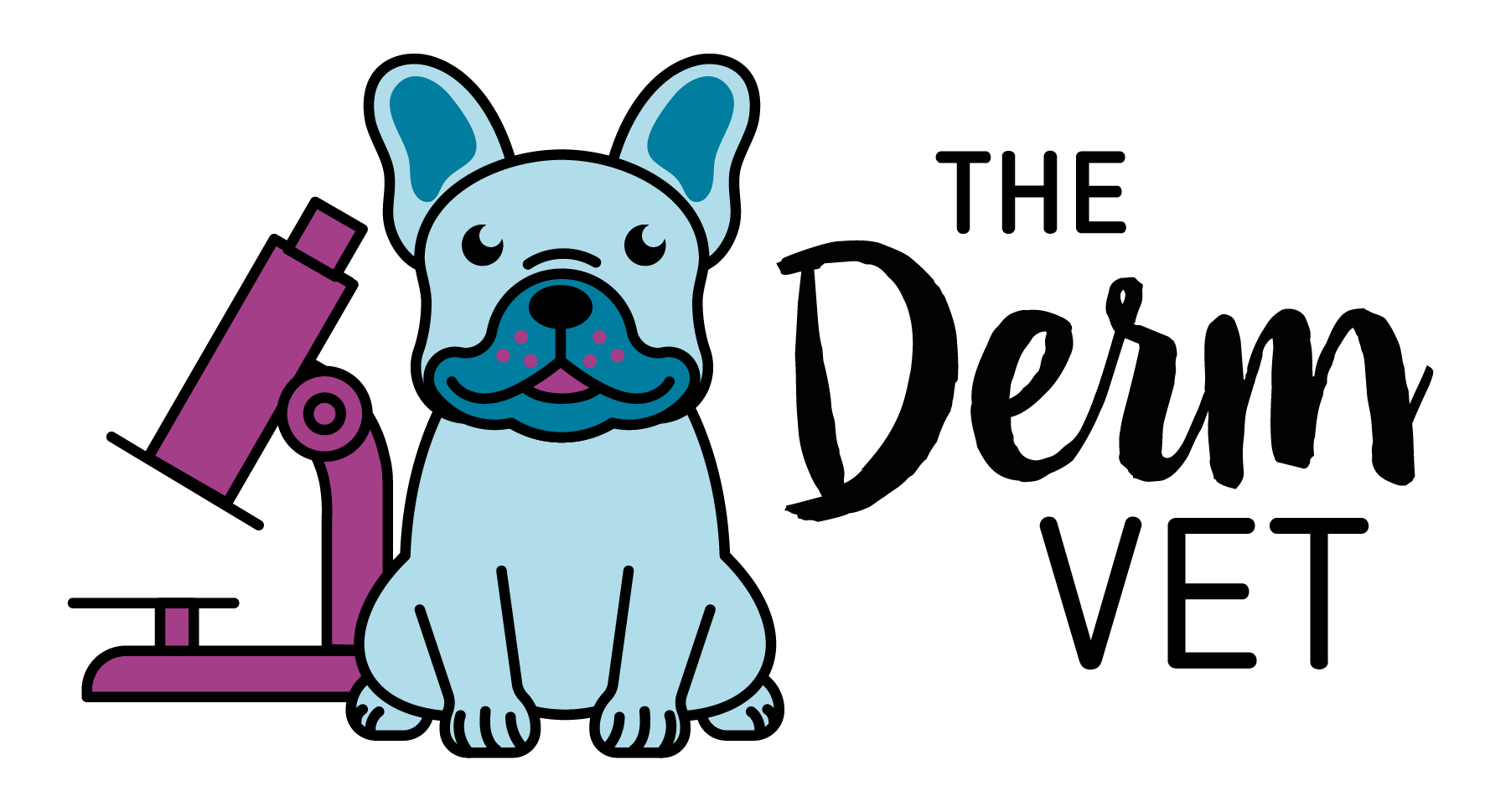In episode 81 of The Derm Vet podcast, I discuss the four common flare factors for allergic pets. If a dog becomes itchy despite the use of an effective antipruritic, we want to assure a flare factor isn’t complicating things before switching our allergy management.
So, what are the four common flare factors in dogs?
- Secondary infection. You know I love to #cytologyeverything. It is so important to identify secondary pyoderma and yeast dermatitis. Infections can cause pruritus separate from allergic itch. Practice performing cytology frequency so you can feel more confident collecting and evaluating samples.
- Lack of ectoparasite control. Just because flea prevention was purchased a month ago, doesn’t mean it was given. Make sure to ask the owner if all pets in the household are up to date with prevention. Life happens and a simple mistake like forgetting flea prevention can be an easy fix.
- Food allergic pet getting exposed to abnormal food. Maybe the client didn’t realize giving the pills in a hot dog was an issue. Maybe the dog went into work with the owner and stole a sandwich (I have had this happen!). Maybe a neighbor was feeding the pet over the fence in the backyard (this has happened to me too!). If we know part of the itch is related to food allergy, make sure to see if there is a possibility of an exposure.
- Seasonal flares. Unfortunately, seasons change and allergies flare. Even well-managed allergic pets can have a flare in a tough time of year. If we can get through that flare (whether addressing infection, increasing topical therapy, temporarily adjusting the antipruritic, etc.), the anchor allergy treatment may still be a great option.
Check out episode 81 of The Derm Vet podcast to learn more!
This podcast was sponsored by Zoetis. Zoetis is dedicated to changing the way we approach canine pruritus to protect the bonds between the pet, the owner and the veterinary team. Visit ScienceofStrongerBonds.com for more information.


